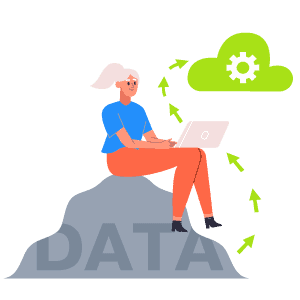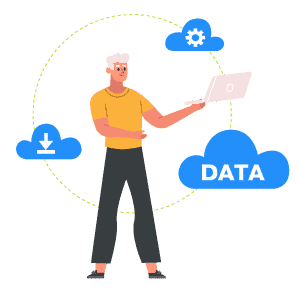Data migration usually refers to complex data movement from one location to another. Care must be taken to ensure no data loss and maintain data integrity. The reasons for migrating data can include moving to new application architectures or cloud-based storage or supporting modern cloud data management platforms to gain more value from data assets.
Data Migration Strategy
Every data migration is different, but successful migrations use a multi-step process with plenty of testing. Migrations can be expensive, so a strong business case and management buy-in are advisable. Many data platform providers offer migration tools to move data, stored procedures and associated referential integrity rules to their technology. Vendors, such as Actian, provide services to ensure a smooth migration.
The following outlines some of the steps involved in a data migration project:
Determine the Scope of the Migration Project
Scoping helps to bind the cost and effort needed to perform the data migration. The success of a migration project relies on accurate scoping and planning. Without an accurate estimate of what the project will deliver, it is subject to scope creep with financial overruns and late completion.
Designing the Migration
The migration design depends on what is being moved and selecting tools to handle data transformations. For example, if you are moving a database, stored procedures will usually be rewritten. Functions that don’t exist on the target platform will have to be written as user-defined functions.
Migration Strategy
Migrations should be phased. Progress must be reviewed as milestones are reached or missed to keep the project on course. Parallel running of old and new systems provides some insurance with switchback capability.
Testing Migrated Data
Data at the target system needs to be compared to the source after each move. Data validations and referential constraints need to be verified. Using change data capture (CDC) technology, new application data can be kept in sync with the old data during acceptance testing.
The Switch to Production
Parallel running of the old and new systems helps build confidence in the new application. When the users are satisfied with the new system, the old application can be retired.
Post-Migration Review
A review of the migration captures best practices and mistakes to avoid for future migration projects.
Actian Migration Capabilities
Actian makes migrations to the Actian Data Platform easy by providing migration tools and services.
The migration of terabytes of data, thousands of tables and views, specialized code and data types, and removal of proprietary impediments doesn’t happen overnight. Below are some reasons to consider Actian for your next data warehouse migration:
- The Actian data platform can be deployed on-premises and in hybrid and multi-cloud environments, including AWS, Microsoft Azure, and Google Cloud.
- The highly scalable platform helps you incrementally migrate or offload from your legacy data warehouse until it can be retired.
- The Actian Data Platform supports Hadoop data formats such as Parquet and ORC in the cloud and on-premises.
- The Actian migration service ensures that over 90% of custom code written for legacy data warehouses is migrated automatically. Actian professional services can migrate any unique code to make the migration worry-free for you.
- Actian also delivers full interoperability with your existing back-end applications, enterprise data repositories, and new data sources.
Visit our website to learn more about modernizing your existing data warehouse.

Migrating to the Cloud
Most organizations have adopted a multi-cloud approach to data management to allow them to use the latest and most cost-effective and scalable data processing and storage options. The cloud offers unlimited elasticity to grow with the organization’s data needs, and subscription pricing ensures you only pay for the resources you are using.
Even legacy on-premises big data lakes like Hadoop have cloud variants supporting older storage formats and associated Spark APIs. This makes migration much easier as the business can avoid costly data transformations.
Data Migration Strategy for New Application Architectures
Applications are increasingly adopting a microservices architecture that converts old monolithic applications into smaller, more reusable components, enabling new applications to be built faster. When an application is refactored into more granular components, the data it uses has to be similarly refactored. Fortunately, most procedural applications have a high-level mainline section with common data elements that call various subroutines and functions. These sub-components explicitly state what data parameters are passed to them and what results are passed back to the calling application. Data modeling tools can scan application code to depict how data is used visually. As a bonus, such tools can highlight dead code and orphaned data, which can be eliminated when re-engineering.


Data Migration Strategy for Modern Data Platforms
After experiencing the downside of centralized enterprise data warehouse (EDW) initiatives, organizations are looking for better ways to integrate data distributed across the business. Data fabrics and data meshes are emerging data architecture designs that can make data more accessible, available, discoverable, and interoperable. The data fabric approach enables data abstraction from systems into a common set of data objects that are treated as unified enterprise data with centralized ownership and management. The data mesh approach uses a decentralized architecture that distributes data ownership to lines of business or domain experts. Both approaches may be valuable enough to justify significant data migration projects.



